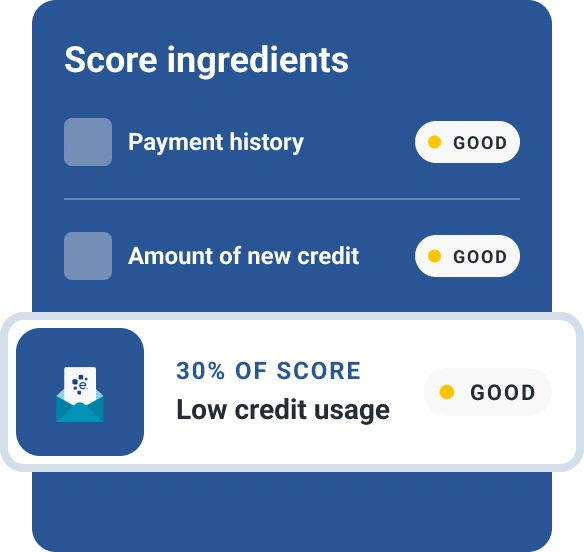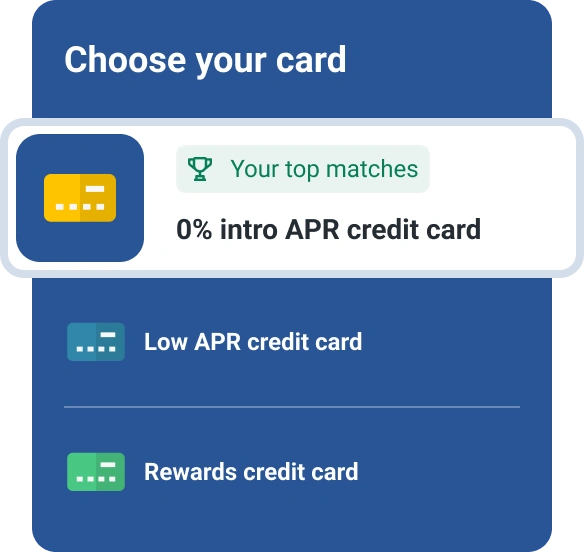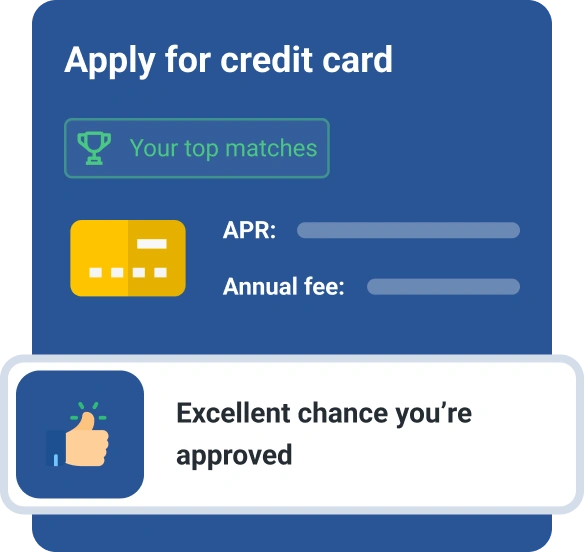How Does Credit Card Interest Work?
Quick Answer
You can incur credit card interest when you carry a balance on your credit card, take out a cash advance or miss a payment by 60 days or more.

Interest on a credit card can be less straightforward than with other types of debt. What you'll pay, and even when you'll pay it, can vary depending on your card and how you use it. At the same time, it's also possible to avoid paying credit card interest altogether if you're diligent.
If you have a credit card or you're considering getting one, here's what you should know about how credit card interest works.
What Is Credit Card Interest?
Credit card interest is the cost of borrowing money when you carry a balance from month to month. It's expressed as an annual percentage rate (APR), which tells you how much you'll pay in interest over a year if you don't pay off your full balance.
If you pay your statement balance in full each month, you can typically avoid interest charges thanks to a grace period. But if you only make the minimum payment—or miss a payment altogether—interest will start adding up quickly.
APR vs. Interest Rate
The terms "interest rate" and "APR" are often used interchangeably. In the case of credit cards, they typically mean the same thing because additional charges such as annual fees, balance transfer fees and cash advance fees aren't factored into a credit card's APR.
With other loans, however, the two aren't necessarily the same. While your interest rate determines how much interest rate you pay on an annual basis for a loan, the loan's APR incorporates all finance-related charges, including origination fees, application fees and more.
Learn more: Statement Balance vs. Current Balance: What's the Difference?
Different Types of APRs on Credit Cards
Credit cards often charge several different types of APRs, depending on how you use them. Here's a quick summary of what you might find.
Purchase APR
This is the interest rate you pay on new purchases you make with your card. Your rate will generally depend on the credit card product itself and your creditworthiness. According to August 2025 data from the Federal Reserve, the average credit card interest rate is 21.39%, though many cards offer lower rates to borrowers with stellar credit.
Fortunately, credit card companies usually give a grace period on purchases, so if you pay your bill on time and in full every month, you can usually avoid paying interest. That said, if you miss a payment or don't pay your bill in full, you may lose your grace period until you pay off the balance.
Learn more: What Happens When You Lose Your Credit Card Grace Period?
Balance Transfer APR
A card's balance transfer APR is often the same as the purchase APR and applies only to balances you transfer from other credit cards. There's typically no grace period on balance transfers, and your rate will usually depend on your creditworthiness.
If you make a purchase while a balance transfer APR applies, however, it's important to know that your payments beyond the minimum amount due are typically applied to the balance with the highest APR first. So instead of going toward the balance you transferred, your payment could be used to cover the purchase you made before paying down your transferred balance (if purchases carry a different APR from your balance transfer APR).
Introductory APR
Many credit cards offer an introductory low or even 0% intro APR on purchases, balance transfers or both. With major credit card issuers, these promotions can last anywhere from six to 21 months, depending on the card. Once the introductory period ends, your card reverts to the standard purchase APR listed in your cardholder agreement.
Cash Advance APR
Typically a set APR, this rate kicks in if you request a cash advance on your account. The cash advance APR is usually much higher than the purchase APR, potentially even 10% to 15% higher. As with balance transfers, cash advances don't qualify for a grace period.
Penalty APR
A penalty APR, typically up to 29.99%, will apply if you miss a payment by 60 days or more on a personal credit card. With some business credit cards, it can occur as soon as you miss a payment. Once you trigger a penalty APR, it'll remain in place for at least six months.
How Is Credit Card Interest Calculated?
There are a few steps to calculating credit card interest, and it can be time-consuming if you don't use an online calculator. However, understanding how the process works can help you know what to expect.
1. Calculate the Daily APR
To do this, divide the APR by 365 (the number of days in the year). So if your APR is 16%, then your daily periodic rate is 0.16 / 365 = 0.00044. Note, however, that some credit card issuers use 360 when determining this rate. You can check with your card issuer to find out which number it uses.
2. Calculate Your Average Daily Balance
Remember, your interest is assessed on your average daily balance. So you have to figure out what that is. To do so, you'll have to look back at your statement.
Start with your balance on Day 1, including any debt you carried over from the previous month. Then, calculate your balance for each day by adding:
- The card's balance at the start of the day
- The day's new charges
- The day's payments and other statement credits
- Fees related to today's transactions
Once you've done this for each day, you'll find the average by totaling each daily balance and dividing the sum by the number of days in the statement cycle.
3. Multiply Your Daily Periodic Rate by Your Average Daily Balance
Now, multiply the daily periodic rate calculated in step one by the average daily balance from step two. Let's say your average daily balance came out to $1,200. The calculation would be: 0.00044 x $1,200 = $0.53.
4. Multiply by the Number of Days in Your Billing Cycle
Finally, you'll multiply your daily interest by the number of days in your billing cycle. If your billing cycle was 30 days, for instance, you'd multiply $0.53 by 30 to get $15.90. You will be charged approximately $15.90 in interest for this billing cycle.
5. Factor In Daily Compounding
Most credit card issuers will compound interest charges daily. In other words, the issuer will add interest charges each day based on your balance from the previous day, then use that to determine your total interest due each month.
Accounting for compounding manually would be extremely time-consuming. Thankfully, the effects of daily compounding are relatively minor over the course of a single month, so you'll get a pretty good estimate with the first four steps in the process.
To better prepare for paying off your credit card balance, you can use Experian's credit card payoff calculator:
Credit card payoff calculator
What Is a Good Interest Rate on a Credit Card?
A good interest rate on a credit card is generally one that's below the national average, which was 21.39% as of August 2025, according to the Federal Reserve. The best rates—often in the low teens—are usually reserved for borrowers with excellent credit and strong payment histories.
What qualifies as a good rate also depends on the type of card. Rewards credit cards often have higher APRs because of the perks they offer, while low-interest or balance transfer cards are designed to provide lower rates or 0% introductory APR periods. Credit unions are legally required to cap their interest rates at 18%.
Ultimately, the lower your rate, the less you'll pay if you ever carry a balance, so it's worth comparing offers or negotiating with your issuer if your credit has improved.
Learn more: What Happens if You Only Pay the Minimum on Your Credit Card?
How to Avoid Paying Interest on Credit Cards
Credit card interest can be both confusing and expensive, but it's possible to avoid it altogether if you use your card responsibly. Here are some ways you can take advantage of the benefits credit cards offer without dealing with the dangers of credit card interest:
- Pay your balance in full every month. As long as you qualify for a grace period on your purchase, you won't be charged interest if you pay your monthly statement balance in full by your due date. If a card offers a grace period—and most do—it must be at least 21 days. Paying your bill on time will also help you avoid a penalty APR.
- Use a 0% intro APR promotion. If you have to make a large purchase or want to transfer a balance from another credit card, you can avoid interest by getting a card with a 0% introductory APR promotion and paying off the balance before the promotional period expires. Just keep in mind that balance transfers typically incur an upfront fee, which is often 3% to 5% of the transfer amount.
- Avoid costly cash advances. If you need access to cash, consider less expensive options before you turn to your credit card. In addition to a higher APR, you'll also pay a cash advance fee, which is typically 3% to 5% of the advance amount, and interest will begin accruing immediately rather than after a grace period.
The Bottom Line
Credit card interest can be tricky, but there are plenty of ways to minimize or even avoid it altogether. If you're considering a new credit card, Experian's card comparison tool can match you with card options based on your credit profile, with no impact on your credit score.
Don’t apply blindly
Apply for credit cards confidently with personalized offers based on your credit profile. Get started with your FICO® Score for free.
See your offersAbout the author
Ben Luthi has worked in financial planning, banking and auto finance, and writes about all aspects of money. His work has appeared in Time, Success, USA Today, Credit Karma, NerdWallet, Wirecutter and more.
Read more from Ben

